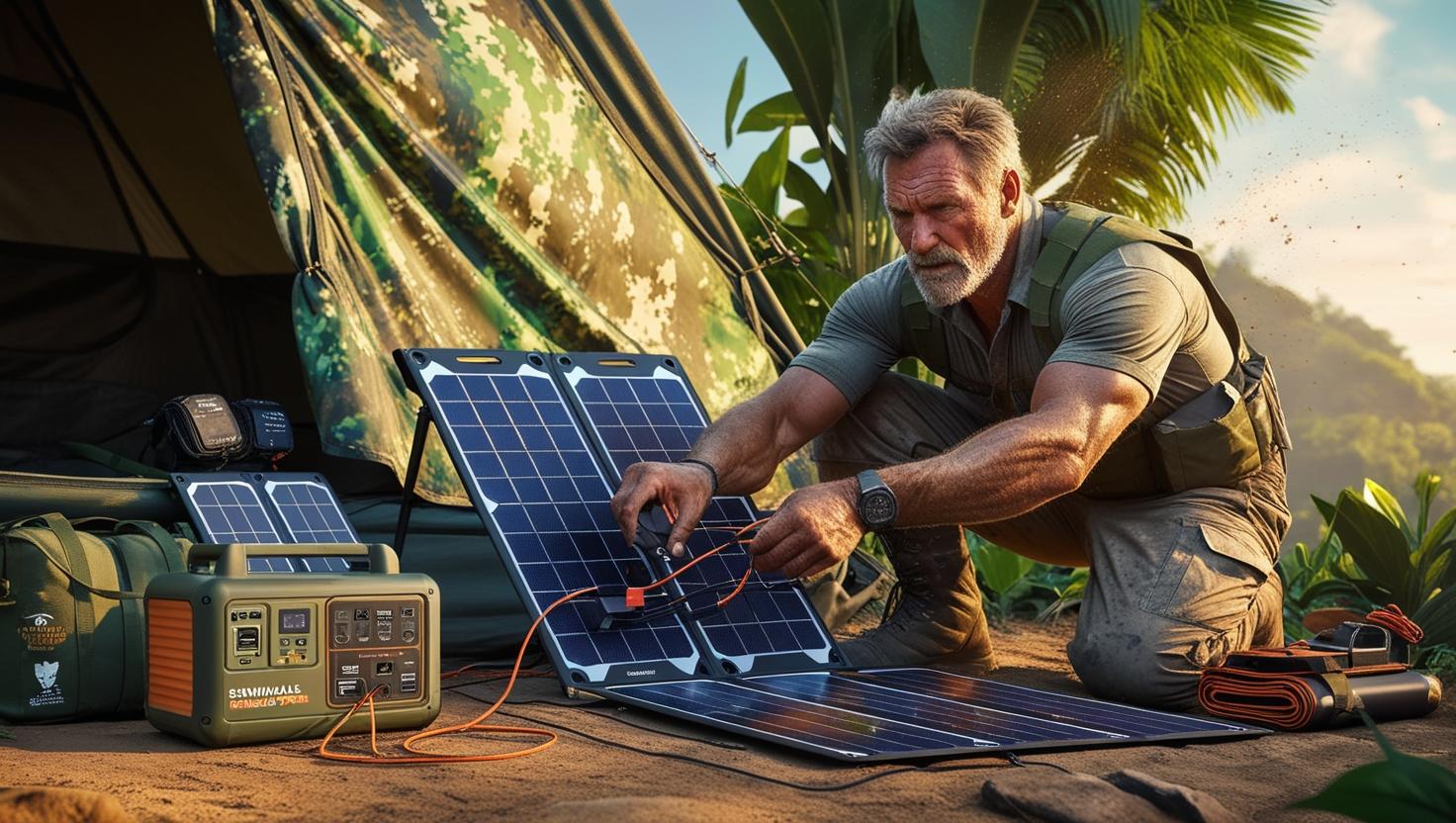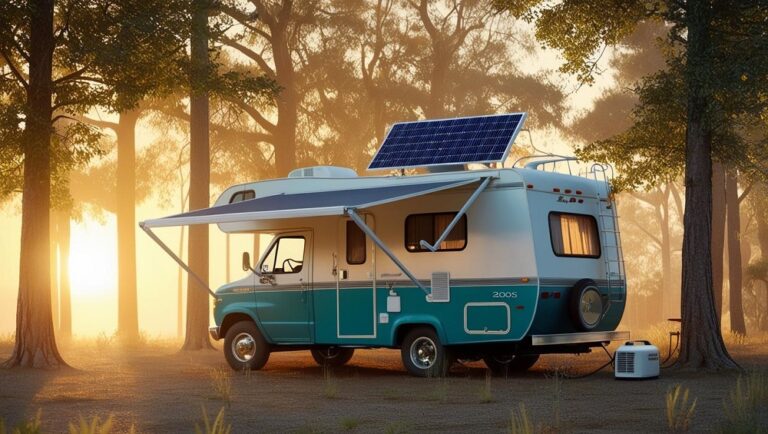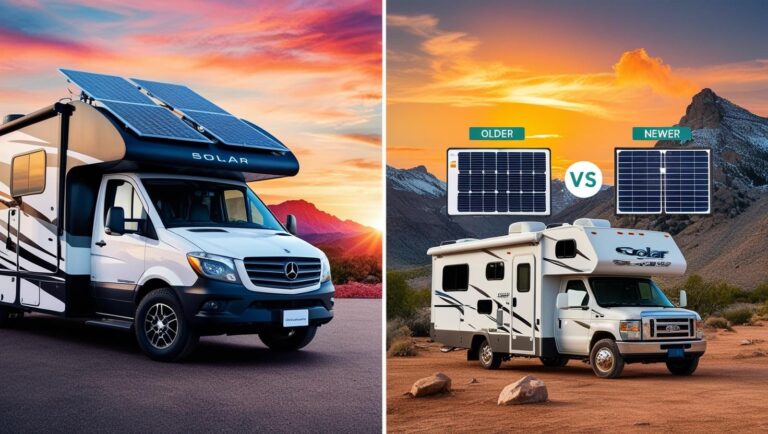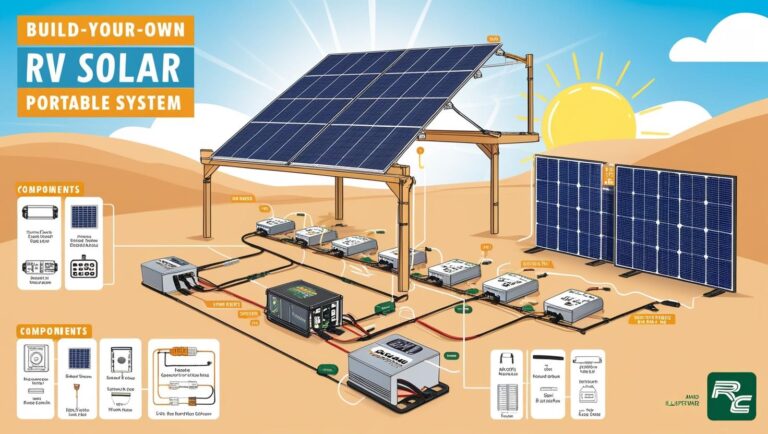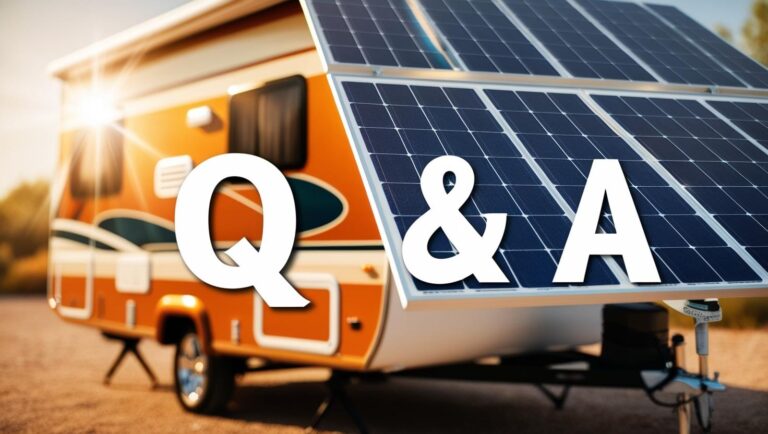Off-Grid Energy in Emergencies
Why Solar is the Ultimate Survivalist Power Source
When disaster strikes—whether it’s a hurricane, grid failure, or societal collapse—the first thing people lose is power. And without electricity, communication shuts down, food spoils, and medical devices fail.
But what if you could harness the sun to stay independent, safe, and connected?
Solar power isn’t just for RVs and eco-homes anymore. It’s a survival essential—clean, silent, and infinitely renewable. Unlike gas generators (which require fuel and attract attention), a well-built solar setup keeps you off-grid indefinitely.
In this guide, we’ll cover:
✔ Why solar is the best survival energy source
✔ Must-have solar gear for emergencies
✔ How to set up a fail-proof system
✔ Real-world survival scenarios
✔ Common mistakes (and how to avoid them)
(For more on how solar became a game-changer, check out Solar’s RV Big Break.)
Why Solar is the Survivalist’s Best Friend
1. No Fuel Dependence
Generators run out of gas. Solar panels? They run on sunlight—something you’ll (almost) always have access to.
2. Silent & Stealthy
In a crisis, noise = danger. Solar systems operate completely silently, keeping your location discreet.
3. Scalable for Any Need
From a small 50W panel (enough to charge phones and radios) to a full off-grid setup (powering fridges, medical devices, and more), solar scales to your needs.
4. Built to Last
Modern solar tech is far tougher than old models. (Wondering how much solar has improved? Compare 2005 vs. 2024 RV Solar Panels.)
Essential Solar Survival Gear
1. Portable Solar Panels
- Foldable & Lightweight (for bug-out bags)
- 100W+ for serious power (runs small appliances)
- Tropic-Tested Tip: Look for waterproof coatings—humidity and storms demand durability.
2. Solar Generators (Power Stations)
- Jackery, Bluetti, EcoFlow (pre-built, no assembly)
- DIY Battery Banks (for advanced users)
- Key Spec: 500Wh+ capacity for overnight power.
3. Charge Controllers & Inverters
- Prevents battery overcharge (critical for longevity)
- Converts DC to AC (so you can run standard devices)
4. Solar-Powered Accessories
- LED lights (low-energy, long-lasting)
- Solar radios (for emergency broadcasts)
- 12V coolers (keeps meds/food fresh)
(Need help choosing panels? Our 2005 RV Solar Q&A covers durability questions.)
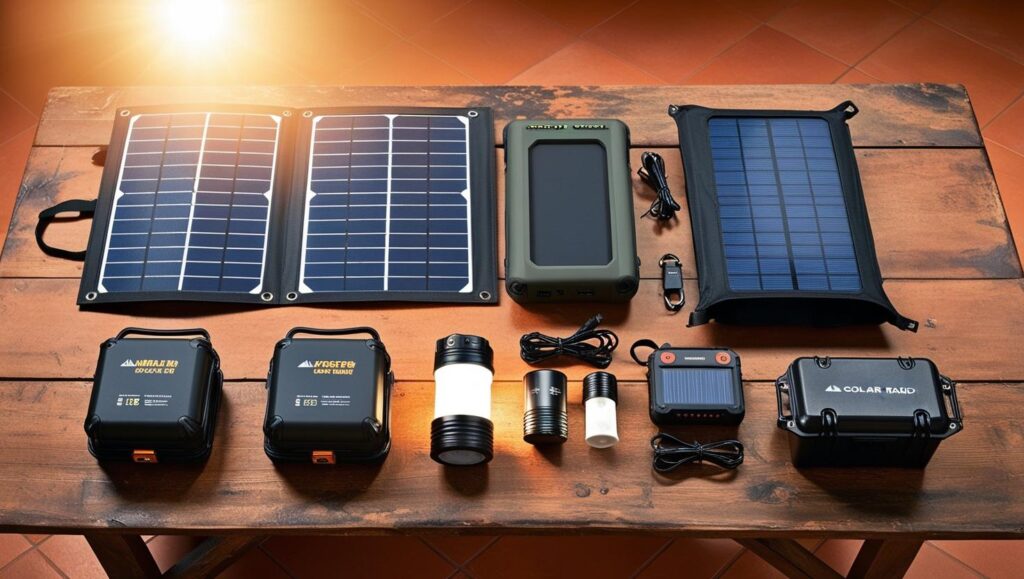
Setting Up Your Survival Solar System
Step 1: Calculate Your Power Needs
- Basics: Phones, lights, radio (~100Wh/day)
- Advanced: Fridge, CPAP, tools (~1000Wh/day)
Step 2: Optimize for Sun Exposure
- Angle panels south (northern hemisphere)
- Avoid shadows (even partial shade kills efficiency)
- Portable? Use a sun-tracking setup
Step 3: Weatherproof Your System
- Sandbag mounts (high winds)
- Waterproof battery cases (tropic humidity)
- Corrosion-resistant connectors (salt air = enemy)
Real-World Survival Scenarios
1. Bug-Out Vehicle Setup
- RV-style solar on trucks/vans
- Keep batteries charged while mobile
2. Hidden Campsite Power
- Silent, no smoke or noise
- Solar + camouflage netting = undetectable
3. Post-Disaster Community Aid
- Solar-powered charging stations
- Water purification with 12V pumps
Common Solar Survival Mistakes (And Fixes)
❌ Mistake: Cheap panels that fail in heat.
✅ Fix: Buy tropic-rated panels (check temp tolerance).
❌ Mistake: No battery backup for nights.
✅ Fix: Always oversize your battery bank.
❌ Mistake: Ignoring maintenance.
✅ Fix: Clean panels weekly (dust = 30% efficiency loss).
Final Thoughts: Be Ready Before the Storm
Solar isn’t just about saving money—it’s about saving yourself when the world goes dark. Start small (a solar phone charger), then build toward full energy independence.
Want more? Dive deeper into solar setups with our RV Solar Hub.
Stay powered. Stay safe. Stay ready.
